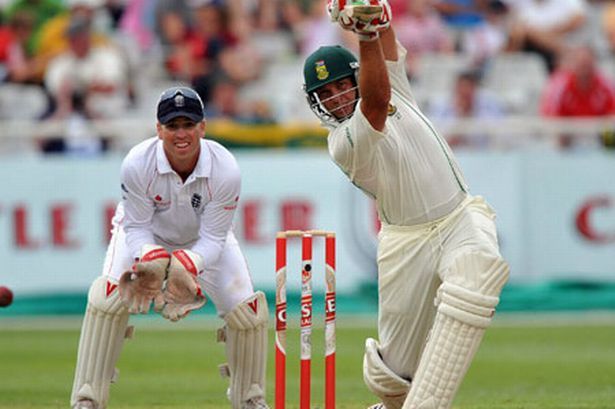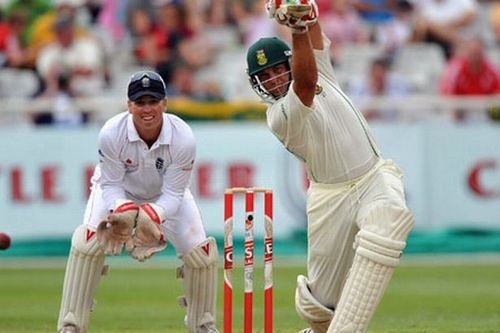
Jacques Kallis: A consummate cricketer who left a colossal footprint

It is perhaps too complicated to celebrate one of the finest cricketers to have ever played the game. Maybe the effort needed to scale high enough to look Jacques Kallis in the eye induces vertigo. Much as we struggle to grasp the colossal greatness of Kallis, the man himself may have won the approval of Ralph Waldo Emerson for scripting a glorious career with an understated eloquence. After all, it was great American writer who said, “A great man is always willing to be little.”
Kallis had to work hard in his quest for greatness
Some cricketers are good with the bat, others can bowl well. A rare few are also good in the field. Kallis was all of that and more rolled into a single cricketer. Greatness though did not come calling on the South African allrounder.
Kallis suffered a rather ordinary start to his career. The first five tests of his career yielded him just 57 runs and the grand sum of five wickets. After making his debut as a fledgling 20 year old, the young man had to set out in earnest in his quest for greatness.
The first hint of Kallis’s value to the resurgence of South African cricket came against the mighty Australians at the Melbourne Cricket Ground. The visitors were in dire trouble at 88-3 in the fourth innings, still needing to survive the most part of a tricky final day trailing Australia by nearly 300 runs.
Casting himself in the role of a saviour
A resolute Kallis and his captain, the late Hansie Cronje worked together for the better part of 60 odd overs, constructing an invaluable 123 run partnership to help South Africa to safety. The release from helping his team and making his first hundred left Kallis enervated as he departed just after going past his century.
In a career spanning nearly twenty years, Kallis would play the role of saviour several times over. He kept chipping away with the relentless discipline of a woodpecker. The burly man accumulated runs and wickets, often in a persistent trickle, layering his monument one brick at a time.
Of course, you do not become the third highest run maker without making them by the bucketful. The workmanlike Kallis shot to international fame when he made four fifties and a hundred over the visiting West Indian team in 1998-99. The man from Cape Town made 485 runs and took 17 wickets in five tests of that series to underline his value to the team.
Staggering numbers
While you cannot always measure the value of a player by sheer numbers – it is educating to understand the scale of Kallis’s impact through some of his staggering statistics. His 13,289 runs have come at an average superior to that of Sachin Tendulkar and Ricky Ponting, who were primarily just batsmen.
Bowling more than 20 overs per test match, Kallis accounted for 292 wickets at an average of 32.65 per victim. The incomparable Garfield Sobers took 235 wickets at an average of 34.03, which is similar to Kallis’s collection, but then the South African struck once every 70 balls against 92 for the legendary West Indian.
The South African also specialised in the slips – snapping up 200 catches during his 166 test match career. Combined, those numbers underline the fact that Kallis was able to concentrate on the game for long periods of time – with bat, ball or whilst standing in the slips.
Sobers aside, only Kapil Dev and Ian Botham managed to take more than 250 wickets and score over 5000 runs. These are numbers that help put Kallis’s accomplishments in perspective considering that they are all from a far more comparable eras relative to the times when Sobers played his cricket.
Equally adept at the limited overs format
One of Kallis’s biggest criticism has been his slow accumulation of runs. But there is nothing to sneer about 11,579 runs at nearly 73 runs per every 100 balls faced in one day internationals. The number is expecially impressive considering that the South African has played his cricket across three different decades.
Kallis has also collected 273 victims over 328 match career at an economy rate of 4.84, striking once every 40 balls. In fact the presence of Kallis in the team has allowed the South Africans the luxury of six batsmen and five bowlers, something few teams can be lucky enough to afford.
The great man batted at different positions, but his biggest success has come from playing at number four, where he has the highest batting average among his contemporaries who played in that position.
One lasting regret
No South African, let alone a national cricketer, can ever forget that epochal World Cup semifinal in June 1999, between Australia and South Africa at Edgbaston. Kallis stood out with his performances, turning out valuable bowling and batting performances on that fateful day.
Kallis bowled his 10 overs for a miserly 27 runs including two maidens and a wicket to set up a comfortable chase for his team. He went on to make the highest score for his team, a 53, but he was dismissed when his team needed less than 40 runs.
An incredible 16 ball 31 from Lance Klusener nearly took the Proteas home, before Allan Donald committed hara-kiri in the final over. Even after his retirement from test cricket last December, Kallis sought to play ODIs looking to address the single biggest regret of his career.
Not winning the World Cup is a favourite peeve for an average South African. For a man who has been part of four well kitted World Cup teams, it must rankle not to own a single ICC medallion to show from those travels. He dreamt of addressing the void by playing through 2015, but fortunately for him, realised early enough that he did not have a realistic chance of chasing an elusive dream.
A void the size of the big hole in Kimberly
South Africa will miss the dedication, discipline and most importantly the experience of a cricketer ever willing to work for the team. It is one of those situations when it might take three players to replace one. The Big Hole in Kimberly is an abandoned open pit diamond mine – the void created by his departure could be just as cavernous for the South African team. Kallis stands head and shoulders over his contemporaries, like an insurmountable mountain. Generations to come will look up in awe and regale each other in the myriad legends weaving tales out of Kallis’s mountainous career.
Like a genius ahead of his time, the great man trudges away into the shadows in his typically understated manner. Kallis might even be aware that he has indeed built a grand monument, but it will take an awestruck future generation to understand and recognise its beauty and grandeur.